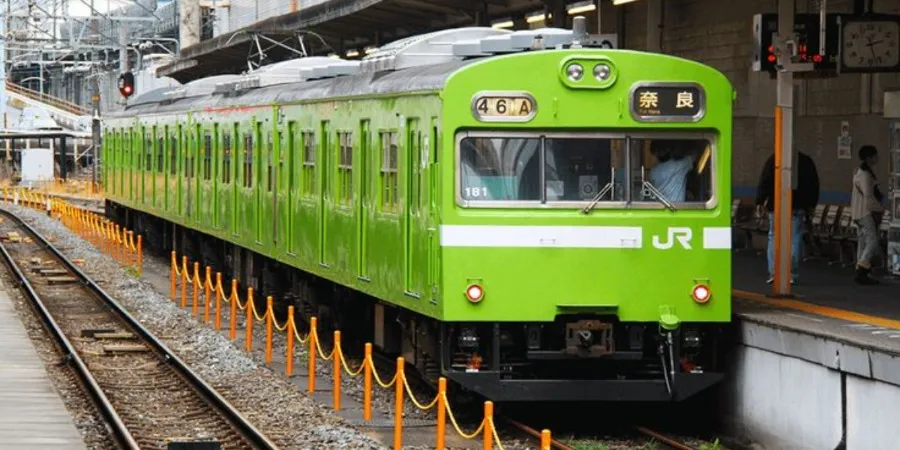The complete guide to traveling by trains in Japan
With a wide network of trains covering all provinces in the country, affordable prices and extremely accurate schedules, trains are considered to be one of the most popular and important means of transportation in Japan.

However, those new to Japan may be overwhelmed by the complexity of the train systems and find it hard to figure things out. Don’t worry, since even those who have been in Japan for some time and even Japanese people still have trouble sometimes with the trains.
Understanding your struggles, this article is GoEMON’s complete guide to traveling by train in Japan. Here, we will introduce you to all the information that you need to know, from the different types of trains, and different train routes, to how to buy train tickets and so on.
Let’s jump right in, shall we?
1. Different train systems: urban and suburban
The train system in Japan is divided into 2 main parts: the urban trains (urban rail) which travel within the city and surrounding areas and suburban trains suburban rail) that travels within suburbs and neighboring cities/areas.
2. Train lines
The Japanese train systems have many different train lines (routes), and each is numbered for easier distinction. Each train line will have 2 routes going in 2 opposite directions: one from location A to location B and the other from location B back to location A.
Make sure to always correctly remember the name of the train line and the direction it’s heading so as to not get lost! It might get confusing sometimes as there can be many train lines that stop at the same locations, so one solution is to manually check whether the train that you will be getting on coincides with the stops as stated on the map or not.
What if you are on the right train line but the wrong route? Don’t worry! You just need to get off at the next station and change to the opposite platform, and this wouldn’t cost you any extra money.
3. Types of trains
As of date, there are 5 major train types in Japan, which varies in terms of number of stops and traveling speed.
- Local Train (Kakueki-teisha/Futsu-densha)
- Rapid Train (Kaisoku)
- Express Train (Kyuko)
- Limited Express Train (Tokkyu)
- Shinkansen Bullet Train (Super Express)
4. How to buy train tickets
You can buy train tickets at the ticket counter/office, at ticket vending machines located near the ticket gates in train stations, or online.
4.1. Buying train tickets at the ticket counter/office
Ticket counters/offices are more common at major train stations, which most of the time are for those who want to buy tickets for the Shinkansen Bullet Train or for long-distance travel. To buy tickets there, you will have to provide all necessary information to the staff, such as the number of tickets, departure date and time, departure station, arrival station, train car type, seat type, train number, and the like. If you don’t know Japanese, you can also write down all the necessary information and then give it to the staff.
4.2. Buying train tickets at ticket vending machines
Step 1: Check the ticket price, departure, and arrival stations through the map above the ticket vending machine area.
Step 2: Choose your preferred language, the station you want to go to, and the number of tickets that you would like to purchase. The machine will then display the price that you have to pay.
Step 3: Put the money into the money slot. Most machines will accept both coins and cash. You can then collect your ticket(s).
4.3. Buying train tickets online
You can also buy train tickets online. However, these only apply to long-distance travel, such as Shinkansen tickets.
5. Using IC Cards (or Smartcard)
Most railway systems in Japan use IC cards (a form of electronic card) to pay for tickets. Some of the most common IC cards include Suica (no longer available for purchase), Pasmo, and ICOCA. In addition to paying train fares, these cards can also be used to pay at convenience stores and more modern vending machines.
To use IC cards, you only need to tap the card on the card-reader sensor before going through the gates.
6. Signs and announcements at the train station
There are many different signs, notifications, and announcements placed at the train station. Some important ones that you should know are:
1. Directional signs
駅 (えき) - Eki: Station
入口 (いりぐち) - Iriguchi: Entrance
出口 (でぐち) - Deguchi: Exit
改札口 (かいさつぐち) - Kaisatsuguchi: Ticket gate
2. Train related signs
列車 (れっしゃ) - Ressha: Train
発車 (はっしゃ) - Hassha: Departure
到着 (とうちゃく) - Touchaku: Arrival
停車 (ていしゃ) - Teisha: Stop
次の駅 (つぎのえき) - Tsugi no eki: Next station
運賃 (うんちん) - Unchin: Passenger fare
3. Signs related to safety and warnings
注意 (ちゅうい) - Chūi: Attention, be aware of
火災 (かさい) - Kasai: Fire
緊急 (きんきゅう) - Kinkyū: Emergency
故障 (こしょう) - Koshō: Breakdown
避難 (ひなん) - Hinan: Evauate
4. Signs related to services and amenities
飲食 (いんしょく) - Inshoku: Eating and drinking
トイレ (といれ) - Toire: Toilet
放送 (ほうそう) - Hōsō: Broadcast
駐輪場 (ちゅうりんじょう) - Chūrinjō: Bicycle parking space
駐車場 (ちゅうしゃじょう) - Chūshajō: Parking Space
For those new to Japan, taking the train may seem scary and challenging. GoEMON hopes that the article was informative and able to help you better understand how to use the train systems in Japan!
Don’t forget to follow GoEMON Global for the latest updates on life in Japan!